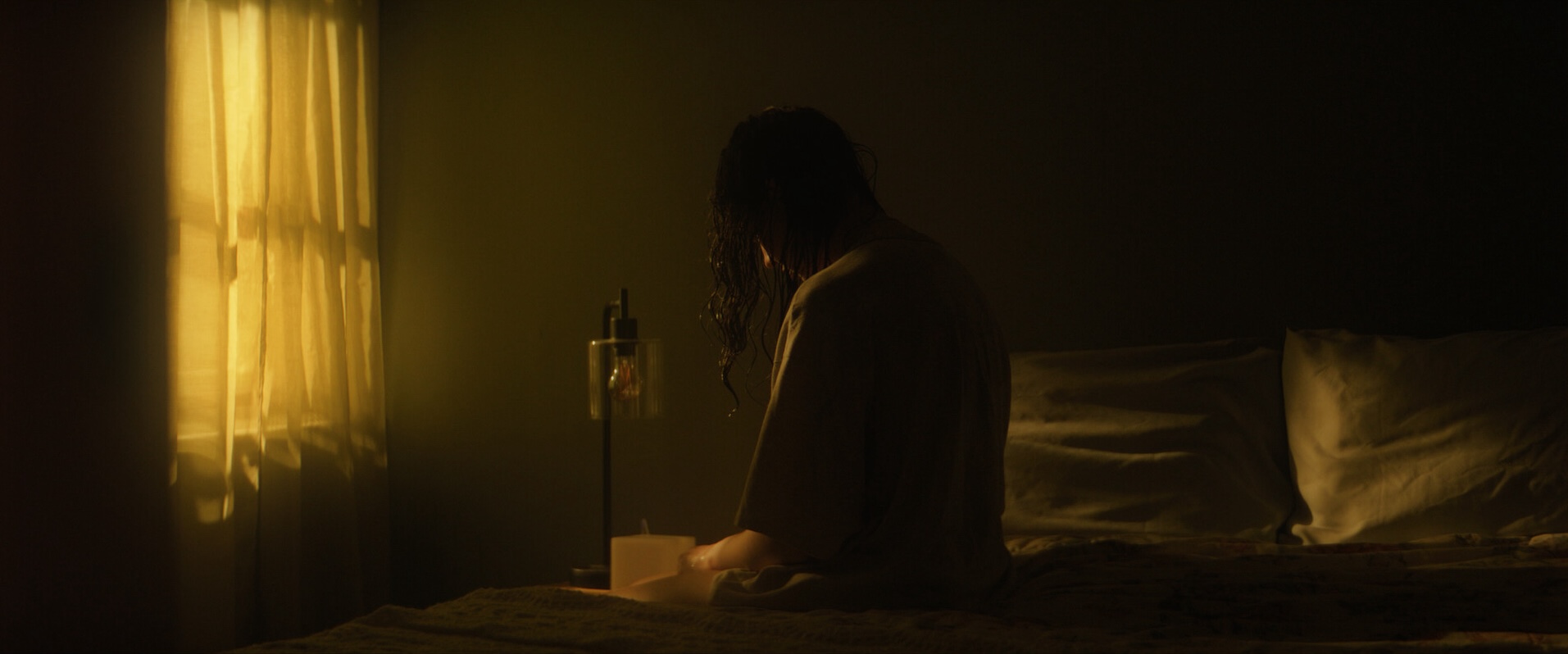GIRL WITH THE GREY EYES
dir. Kara Grace Miller

“Are you going to tell?”
“No.”
She sits at a bright computer in a dark room, the wall behind her plastered with scribbled sticky notes. There is a map on her screen, one building highlighted. She zooms in, then zooms in again, her eyes fixed on something we cannot see. Her sink is full of dirty dishes, her counters thick with trash.
Confidently directed by Kara Grace Miller, The Girl With the Grey Eyes is a woozy, bleak depiction of life after a catastrophic trauma. The film is anchored by an intense and focused performance by Danica Lee Clauser as Blaire, its shell-shocked and haunted protagonist. She saves multiple pictures on her phone of a man named Will, the same man she is tracking on the map on her computer. If Blaire is haunted, Will (Jake Robert Robbins, adeptly playing the sort of unobtrusively creepy guy we have all met at bar trivia) is her ghost. She compulsively tracks his location, keeping tabs on him as one might a wasp in the room. Everything has lost its meaning for Blaire. The only thing she cares about is making sure she knows exactly how far away Will is at all times.
Miller wisely leaves the gruesome details of Blaire’s trauma to the imagination. We understand her dark history with Will through a series of brief and jarring flashbacks, the camera momentarily admitting us into her spinning mind. Will’s fist pounding on a door. Blaire desperately scrubbing herself raw in the shower. A mattress stripped of sheets and frantically sprayed with air freshener. The film trusts us to fill in the blanks, and we do.
Blaire’s obsessive tracking of Will leads her to a party where she runs into an old friend, Sydney (a natural and effervescent Lara-Olivia Scott). Sydney, who does not know about the assault, is delighted to see Blaire, and worried that her friend’s weeks-long silence is somehow her fault. She happily chats about a man she has been seeing, one she wants Blaire to meet. The camera slowly spins, then stops on a familiar face as the background noise of the party fades, replaced by a faint and eerie ringing.
Will is there. He is Sydney’s new boyfriend. Their meeting is a ballet of tension, the unspoken truth of his abuse weighing down every second that passes between them.
The beauty of The Girl With the Grey Eyes is in how the cinematography compliments its protagonist’s state of mind. Distinguished by grim, bruised colour palettes and stark, dramatic lighting, the film’s visual landscape is lonely and disconnected, all empty streets and awkward parties. It is the world seen through the eyes of someone who no longer lives comfortably in her own body. A quiet moment between Blaire and Sydney in a bathroom highlights Blaire’s isolation: the two friends stand at opposite windows, adrift in separate frames. The warm yellow light of the party lies behind them. In front there is only darkness, the enormity of Blaire’s trauma casting a shadow. Even when Sydney confronts her—all but admitting that she knows something happened between her friend and Will—Blaire cannot make herself say what she needs to say. Silhouetted against the light, she keeps her mouth closed.
Although The Girl With the Grey Eyes ends on what could be construed as an empowering note, the film is intelligent enough not to depict it as that—or, at least, not as only that. One violent act births another, and Blaire is left traumatized yet again, alone and lonely in a city that feels as alien as a distant star.
“Because nothing happened, right?”
“Yes. It did.”
Elliott Gish wants to creep you out. A writer and librarian from Nova Scotia, her work has appeared in Dark Matter Magazine, the New Quarterly, Grain Magazine, and many others. Her debut novel, Grey Dog, was published this year by ECW Press. Elliott lives in Halifax with her partner and a small black cat named Mr. Parks.
